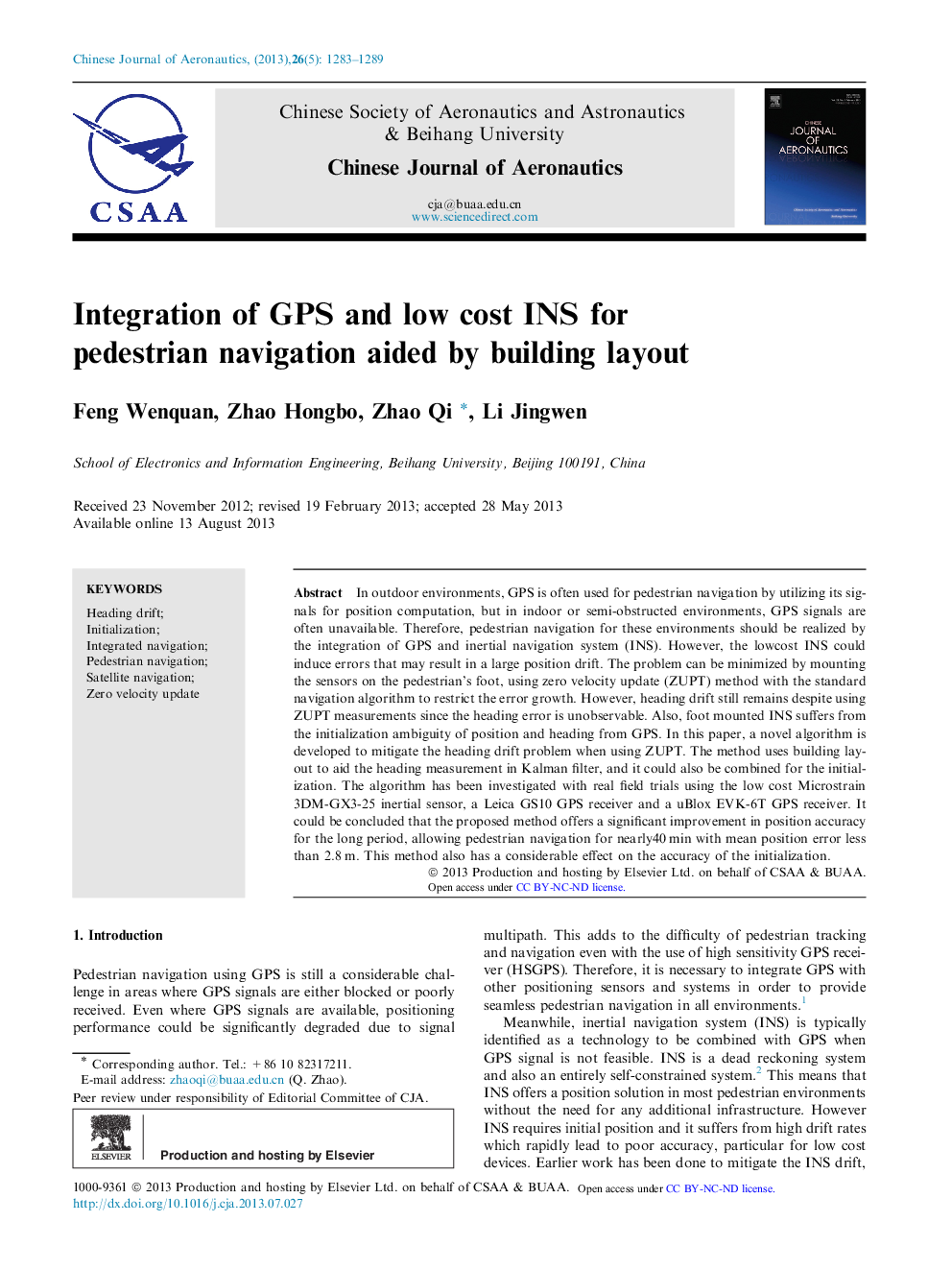| Article ID | Journal | Published Year | Pages | File Type |
|---|---|---|---|---|
| 757786 | Chinese Journal of Aeronautics | 2013 | 7 Pages |
In outdoor environments, GPS is often used for pedestrian navigation by utilizing its signals for position computation, but in indoor or semi-obstructed environments, GPS signals are often unavailable. Therefore, pedestrian navigation for these environments should be realized by the integration of GPS and inertial navigation system (INS). However, the lowcost INS could induce errors that may result in a large position drift. The problem can be minimized by mounting the sensors on the pedestrian’s foot, using zero velocity update (ZUPT) method with the standard navigation algorithm to restrict the error growth. However, heading drift still remains despite using ZUPT measurements since the heading error is unobservable. Also, foot mounted INS suffers from the initialization ambiguity of position and heading from GPS. In this paper, a novel algorithm is developed to mitigate the heading drift problem when using ZUPT. The method uses building layout to aid the heading measurement in Kalman filter, and it could also be combined for the initialization. The algorithm has been investigated with real field trials using the low cost Microstrain 3DM-GX3-25 inertial sensor, a Leica GS10 GPS receiver and a uBlox EVK-6T GPS receiver. It could be concluded that the proposed method offers a significant improvement in position accuracy for the long period, allowing pedestrian navigation for nearly40 min with mean position error less than 2.8 m. This method also has a considerable effect on the accuracy of the initialization.
